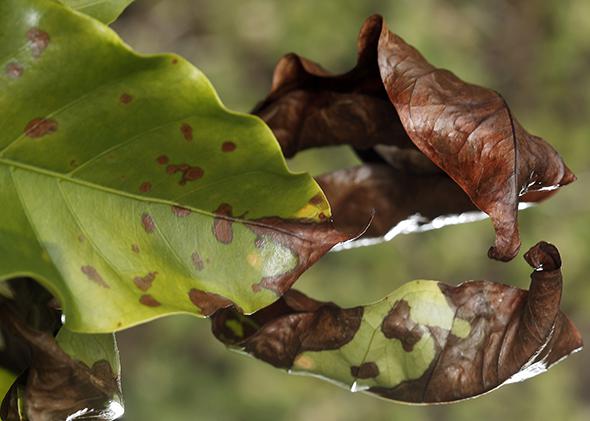The British consume a stunning amount of tea. The United Kingdom drinks the third-most tea per capita in the world, with an average intake of 4.281 pounds per person per year. Depending on how much tea you think belongs in a properly prepared cup, that comes out to somewhere between 650 and 1,000 cups per person. “You can never get a cup of tea large enough or a book long enough to suit me,” C.S. Lewis once remarked. George Orwell called tea “one of the main stays of civilisation” in his country. Yet despite such vows of affection, the truth is that England’s well-steeped love affair with tea began as a rebound from another caffeinated beverage: coffee.
Coffee and coffeehouses gained popularity in Europe during the 1600s. The plants, native to Ethiopia and other parts of East Africa, were grown in the gardens of Louis XIV and cultivated by the Dutch at Hortus Botanicus, one of the oldest botanical sites in the world. In 1825 the British began developing Coffee arabica, the most common variety of bean, on plantations across Ceylon (now Sri Lanka), and within a few decades the country had become the world’s largest producer of the beans.
But in 1869 the British coffee empire unraveled almost as fast as it began with the arrival of the fungus Hemileia vastatrix, better known simply as coffee leaf rust. Over the next two decades, the rust spread quickly through Ceylon, ravaging coffee plants as it went. By 1889, arabica production in the country had all but shut down. The devastated crops were replaced with tea bushes, which did not immediately succumb to the fungus. Ceylon is now a type of tea, Sri Lanka remains a major producer of the leaves to this day, and the British long ago converted from coffee consumers to tea devotees.
Today the fungus that redefined the drinking habits of an entire nation threatens to do the same to the rest of the world. Over the past two years, coffee rust has caused more than $1 billion in economic damage across Latin American and the Caribbean. In El Salvador, a “severe coffee leaf rust outbreak” is expected to cause production in 2013-’14 to plunge 59 percent from the previous season, to its lowest level in 80 years. Brazil, the world’s largest producer of arabica beans, so far has escaped the blight, but instead lost nearly one-fifth of its crop to an unprecedented drought. The cost is beginning to reach consumers: On Tuesday, J.M. Smucker Co., which distributes Dunkin’ Donuts and Folgers packaged coffee, became the first major roaster in the U.S. to announce a major price increase in its coffee brands, raising costs by an average of 9 percent. Even Starbucks has dialed back its purchases of arabica beans as coffee futures have soared.
While coffee rust is nothing new to scientists, as evidenced by its long history, recent climate conditions have given new life to the disease. “For some reason it was kept under control until two years ago, when there was this major outbreak, probably caused by all these climate changes,” says Leo Lombardini, a professor of horticultural science at Texas A&M University and deputy director of World Coffee Research. Spores of the fungus have spread more as of late, he explains, because months of heavy rain have helped them to splash around and jump to new plants.
Coffee rust is a parasite. It feeds off the leaves of arabica plants, stealing their food and infecting them with yellow and brown spots, until the leaves fall off and the plants die. “It doesn’t outright kill the host; it just sucks all of its energy and all of its food out,” says Cathie Aime, a professor of botany and plant pathology at Purdue University’s College of Agriculture. For a long time, the chosen method of combating the rust was to transplant coffee plants to new, uninfected regions of the world—hence how South and Central America came to be the dominant producers of coffee. “The problem we have today is that everything’s so globalized,” Aime says. “There’s no place left to run.”
Pesticides, of course, are an option, but they can be burdensome and, at hundreds of dollars a year, prohibitively expensive for many farmers. “Spraying fungicides is a major endeavor,” Fernando Vega, a researcher at the U.S. Department of Agriculture, tells me. “Imagine going up and down hills with a 5-gallon backpack sprayer weighing 41.5 pounds.” Spraying treatments also come with the risk of toxic contamination, and some farmers who are certified organic resist using them at all.
In an increasingly urgent effort to tackle the coffee rust crisis, the U.S. Agency for International Development last month announced a $5 million partnership with Texas A&M to research rust-resistant coffee varieties and help farmers cope with the infection. One reason Hemileia vastatrix has proved so destructive to coffee crops is that most of the beans we grow today are variations of the arabica species. “Even though we say they’re varieties, they’re like siblings,” Lombardini says. “The genetic diversity is very narrow. And of course any time you have a disease, that doesn’t help.”
Lombardini is hopeful that researchers will be able to develop new beans, as well as recover some older varieties from Ethiopia that have evolved alongside coffee rust and might have acquired resistance to it. The hope is that genetically modified strains of coffee will have a good “cup quality,” tasting much like familiar arabica beans once they’re roasted. On the other hand, it is conceivable that the rust could win out entirely. “Some say we may not be able to drink coffee 50 years from now, or at least coffee as we know it from arabica,” Lombardini says. Should that be the case, the Brits might not be the only ones whose fondness for tea grows out of a shortage of coffee.
